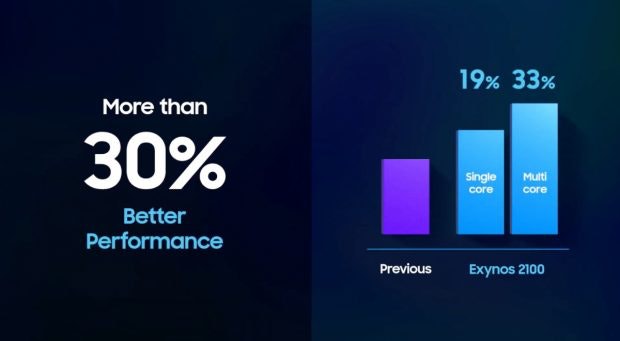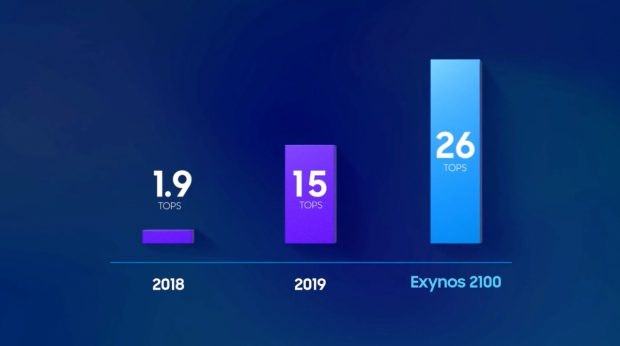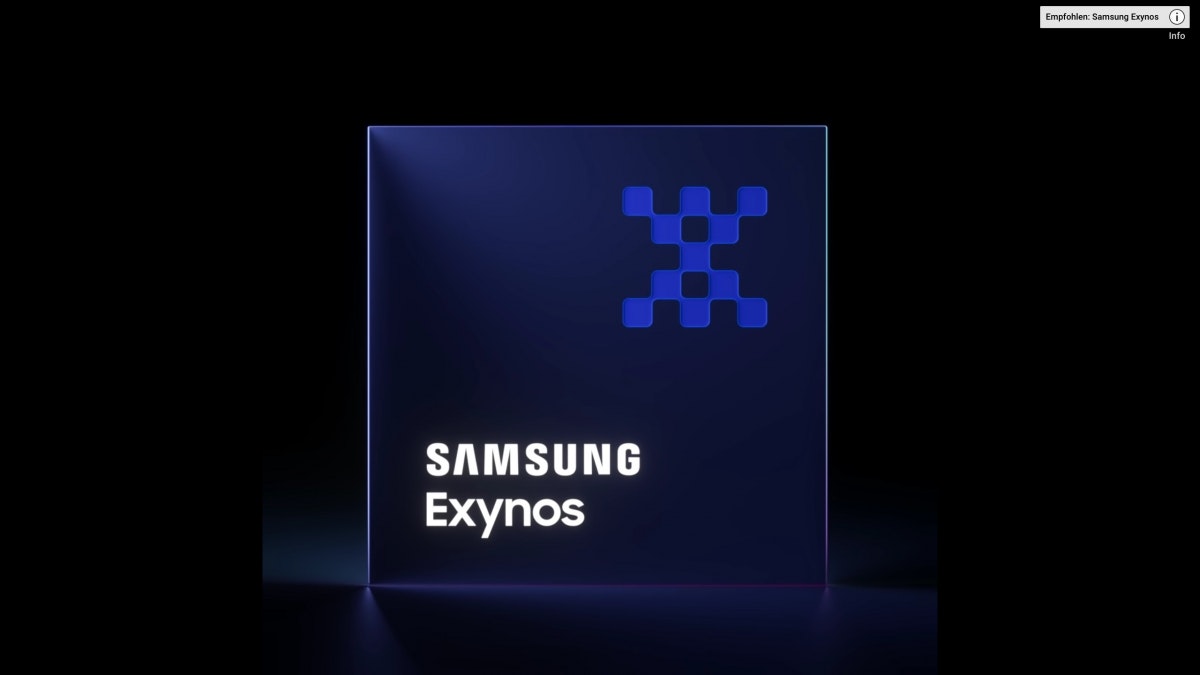For the Galaxy S21: Samsung announces the Exynos 2100 processor
No time right now?
A few days before the Galaxy S21 series was presented, Samsung presented the Exynos 2100, the processor for its new top models. The new SoC can easily hold a candle to Qualcomm’s Snapdragon 888 in the first benchmarks.
Instead of in-house developments, Samsung relies on ARM’s Cortex cores for its Exynos 2100. This should have a positive effect on the performance: According to Samsung, the new system-on-a-chip (SoC) is on par with the Snapdragon 888, which is also manufactured by Samsung.
Contents
Exynos 2100 for the Galaxy S21: 5 nanometers and 8 cores
Like the Snapdragon 888, the Samsung Exynos 2100 has a Corex X1 core on board. (Screenshot: t3n)
With the Exynos 2100, Samsung is now converting its own chip to a five-nanometer structure width. The tech giant is now in illustrious company with Apple’s A14 Bionic, Huawei’s Kirin 9900 and Qualcomm’s Snapdragon 888.
The Exynos 2100 is the first chip in years for which Samsung does not rely on its own Mongoose cores, whose development was discontinued in 2019, but on ARM’s Cortex technology. Like Qualcommm with the Snapdragon 888, Samsung also relies on ARM’s Cortex X1 performance core for its top chip. It is the fastest core that the chip designer has on offer. In contrast to the Snapdragon 888, in which the X1 is clocked at a maximum of 2.84 gigahertz, the performance core of Samsung’s chip runs at a maximum of 2.9 gigahertz. Both the Snapdragon 888 and the Exynos 2100 are manufactured using the LPE-EUV process.

The 5G modem is part of the chip in the Exynos 2100. (Screenshot: t3n)
The X1 is supported by three Cortex-A78 and four Cortex-A55 cores, which are clocked at 2.8 and 2.2 gigahertz, respectively. According to Samsung, a Mali G78 MP144 GPU is integrated as the graphics unit. According to the manufacturer, the new chip delivers 19 percent better single-core and 33 percent better multi-core performance than its predecessor. With regard to graphics performance, Samsung speaks of a 46 percent increase in performance.
Exynos 2100 supports camera sensors with up to 200 megapixels

The triple NPU of the Exynos 2100 is on the same level as the Snapdragon 888. (Screenshot: t3n)
The AI performance has also increased: The three-core NPU can calculate 26 trillion operations per second – the Snapdragon 888 also achieves this value. The predecessor from 2019 only managed 15 TOPS.

The Exynos 2100 can address six camera sensors. Four of them at the same time. (Screenshot: t3n)
The image processor (ISP), which like Qualcomm’s Snapdragon 888 supports sensors with up to 200 megapixels and six cameras and can address four at the same time, has also grown. The chip supports video recording and playback with 8K. In addition, HDR10 Plus support is on board. The SoC also supports display refresh rates of 120 Hertz with WQHD resolution and 144 Hertz with Full HD Plus.

The 5G modem is part of the SoC. (Screenshot: t3n)
As with the Snapdragon and the Kirin 9900, Samsung has integrated the 5G modem into the chip, which not only saves space but also reduces energy consumption, according to the manufacturer. The modem supports both mmWave with up to 7.35 Gbps and sub-6 gigahertz (5.1 Gbps) as well as LTE.
After Samsung has been criticized for years because of its Exynos chips because they couldn’t match Qualcomm’s top chips in terms of performance or energy efficiency, that should change now. At least suggest the first benchmarksthat show the Exynos 2100 even above the values of the Snapdragon 888. How good that Exynos 2100 really will be revealed when Samsung launches its new S21 series. They will be the first smartphones to have the chip on board. Samsung will present its new top smartphones on January 14th.
For read more: Samsung Galaxy S21, S21 Plus and Ultra: This is how the new top models should look – and that should be inside



